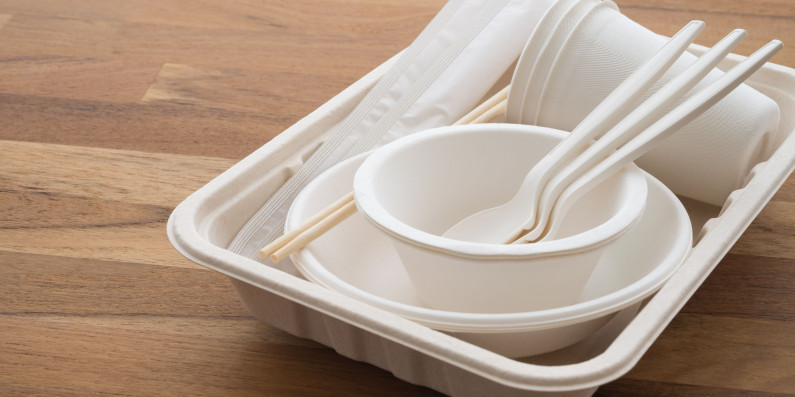Kerbside organics collections are used to make a variety of products such as compost and digestate that are added to our soils. Paper, cardboard and compostable packaging can introduce chemicals of concern such as per- and polyfluoroalkyl substances (PFAS) and other additives into the soil. These can then potentially enter the food chain.
The Ministry is taking a cautious approach by excluding paper, cardboard, and compostable packaging from council-managed food scraps and FOGO collections. Some of the contaminants that can be found in paper, cardboard and compostable packaging are described below.
PFAS
PFAS are a group of synthetic chemicals used in consumer products and industrial processes to provide resistance to heat, water and oils. PFAS can be found in paper, cardboard and food and beverage packaging such as fibre-based takeaway containers and pizza boxes.
PFAS can persist in the environment and accumulate in soils, plants, and consequently enter the food chain. PFAS can also dissolve in water and end up in our waterways.
PFAS exposure may lead to negative impacts for humans, animals and plants. Overseas studies show that exposure to certain levels of some PFAS compounds can lead to negative health impacts in humans.
The New Zealand Environmental Protection Authority (EPA) is doing work to phase out PFAS from cosmetics and firefighting foams. More information on this work is on the EPA website.
Microplastics
Microplastics are small pieces of plastic generally smaller than five millimetres in size. When plastics break down they can produce microplastics. Plastic with the potential to break down into microplastics can be found in some types of compostable plastic packaging and plastic-lined paper products.
Microplastics are becoming a concern globally. Overseas research shows that microplastics have been found in the air, land, water, animals and humans. Like PFAS, microplastics can accumulate in the environment. In Aotearoa, researchers are working to understand the effects of microplastic pollution in our unique ecosystems.
Other additives
Other additives to fibre and compostable packaging, such as inks, dyes and heavy metals, may also contaminate composts. Inks and dyes are often used to add colour to fibre and compostable packaging. Some inks and dyes may contain heavy metals.
Overseas research has found that heavy metals have negative effects on soil health. All compostable packaging certifications have limits on heavy metals, but not all packaging is certified compostable.
